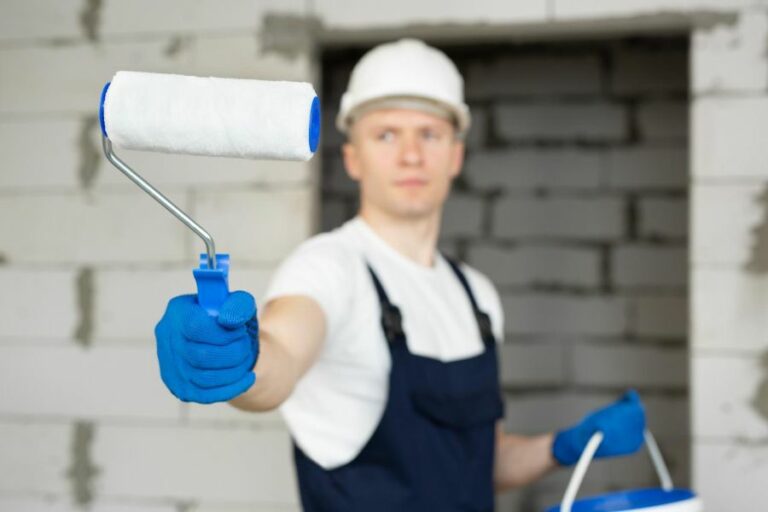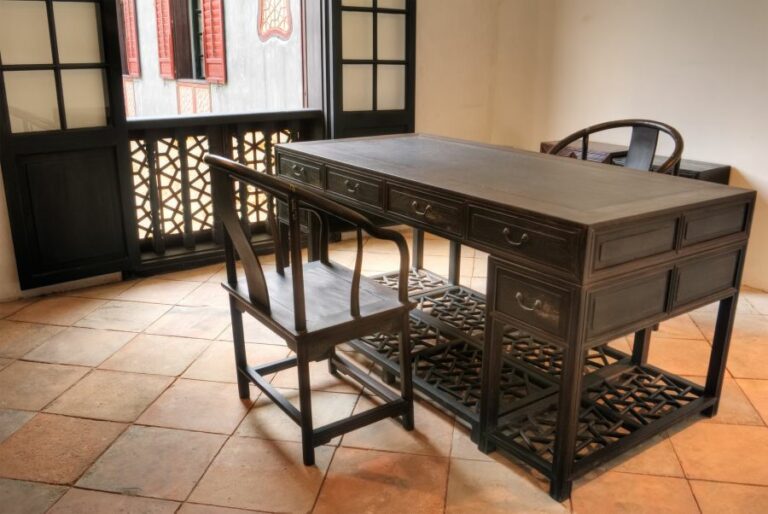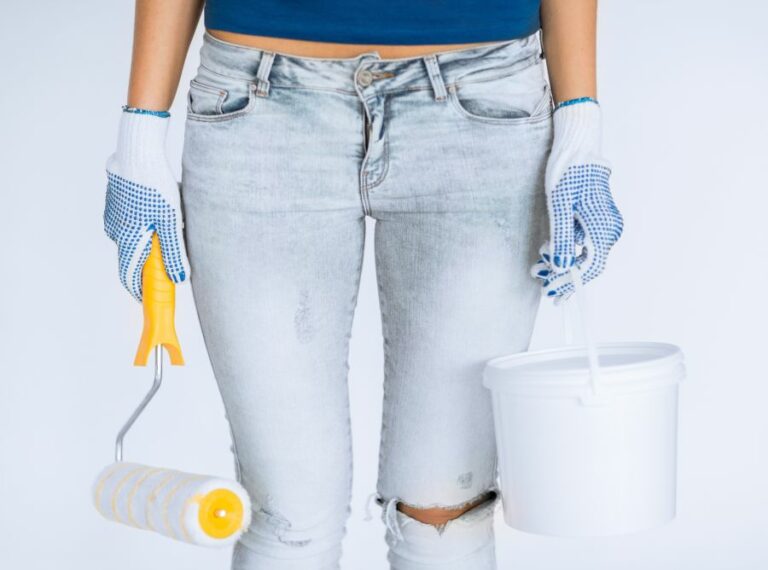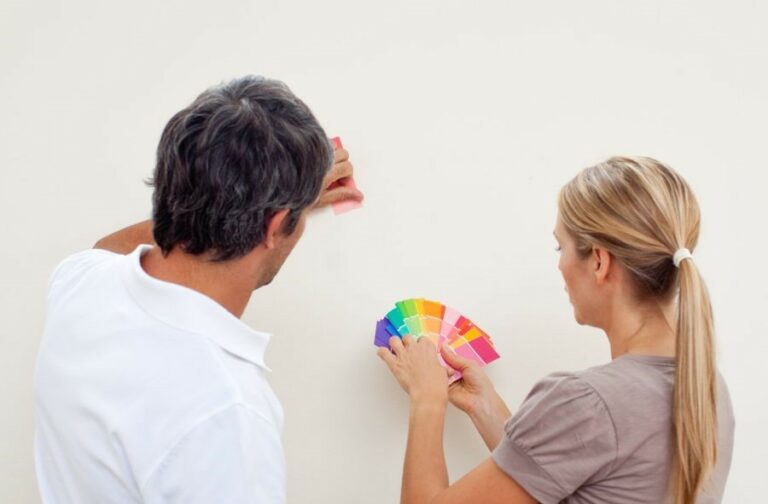Durable Interior Paint For Moisture Protection, 25 Things You Should Know
Moisture can be a major concern when maintaining your home’s interior, but I have you covered. With my exceptional knowledge of durable interior paint, I will guide you toward the perfect solution to effectively protect your walls from those unwelcome moisture problems.
Durable interior paint for moisture protection
Durable interior paint for moisture protection should include breathability, mold and mildew resistance, washability, and low VOC content. Some recommended moisture-resistant paints are Sherwin-Williams Duration Home Interior Acrylic Latex, Benjamin Moore Aura Bath & Spa, Zinsser Perma-White Mold & Mildew-Proof Interior Paint, and BEHR Premium Plus Interior Enamel. Proper surface preparation and application techniques are crucial for optimal results.

Discover how durable interior paint provides exceptional moisture protection for your walls, preventing mold, mildew, and peeling. Learn about the best options available on the market today and how they can transform your home’s interior while safeguarding it from potential damage. Read on!
Contents
- 1 Long-lasting Interior Paint for Moisture Defense
- 2 Top Choice: Paint for High-Moisture Interior Walls
- 3 The Strongest Interior Paint on the Market
- 4 Best Water-Resistant Interior Wall Paint Options
- 5 Most Hard-Wearing Living Room Paint Selection
Long-lasting Interior Paint for Moisture Defense
Creating a beautiful and long-lasting home interior depends on various factors, including the type of paint you choose to use. Durable interior paint that offers moisture protection should, therefore, be a top priority for anyone looking to improve their living spaces.
• Importance of Moisture-Resistant Paints
Rooms such as kitchens, bathrooms, and basements are prone to high humidity and moisture, which may lead to mold, mildew, and weakening of paint applied on the walls, ceilings, and other surfaces. Moisture-resistant paints help prevent these issues while also maintaining the aesthetics of your home.
• Key Features to Look For
When selecting a durable interior paint that offers moisture protection, consider these important features:
– Breathability
Breathable paint allows water vapor to escape from the walls, preventing mold and mildew growth. Look for paints that are specifically labeled as breathable or permeable.
– Mold and Mildew Resistance
Some paints are specifically formulated with antimicrobial agents that inhibit the growth of mold and mildew. These are ideal for areas with high humidity or moisture, such as bathrooms and basements.
– Washability
Durable interior paint should be easy to clean without damaging the finish. This is especially important in high-traffic areas where dirt and stains may be common.
– Low VOC (Volatile Organic Compounds)
Low VOC paints emit fewer harmful chemicals into the air, contributing to better indoor air quality. This is an essential aspect to consider for people who are sensitive to strong odors or those with respiratory issues.
• Recommended Moisture-Resistant Paints
Based on the important features mentioned above, the following paints are excellent options for your moisture protection needs:
– Sherwin-Williams Duration Home Interior Acrylic Latex
This paint offers excellent moisture resistance, as it is formulated to resist mildew growth and can be easily washed without causing damage to the finish. It is also low VOC, making it a healthier choice for your home.
– Benjamin Moore Aura Bath & Spa
Specially designed for high-humidity environments, this paint is exceptionally resistant to mold and mildew growth while offering a gorgeous finish. The low VOC formulation ensures that it is safe and pleasant to use in your living spaces.
– Zinsser Perma-White Mold & Mildew-Proof Interior Paint
This paint is specifically designed to prevent mold and mildew growth, making it an ideal option for rooms with high moisture levels. It is self-priming and offers a durable, washable surface that lasts for years.
– BEHR Premium Plus Interior Enamel
BEHR’s Premium Plus paint line is well-known for its durability and long-lasting finish. With a mildew-resistant formulation and low VOC content, this paint offers moisture protection while ensuring a safe and healthy indoor environment.
• Application Tips
For the best results, follow these tips when applying moisture-resistant paint:
- Properly prepare the surface by cleaning it thoroughly and removing any existing mold or mildew.
- Prime the surface with a high-quality primer to ensure good adhesion and coverage of the paint.
- Apply the paint using the recommended application method (brush, roller, or spray) and follow the manufacturer’s instructions regarding drying time and additional coats.
Painting the interior of your home with durable, moisture-resistant paint can make a significant difference in the lifespan and appearance of your walls and other surfaces.
Selecting paint with the right features, such as breathability, mold and mildew resistance, washability, and low VOC content, will ensure your home’s healthy, long-lasting finish.
For more information on selecting and using durable interior paint for moisture protection, visit the U.S. Environmental Protection Agency’s (EPA) website to learn more about moisture management and indoor air quality best practices.
Top Choice: Paint for High-Moisture Interior Walls
Dealing with high moisture in walls can be a challenge, especially when it comes to selecting the right paint.
• Understanding Moisture-Resistant Paints
Before diving into the recommended paints for high-moisture walls, it is essential to understand what makes a paint moisture-resistant. These paints are designed with special additives, like water-resistant polymers, that prevent moisture from seeping into and damaging the paint.
Additionally, these paints have better adhesion properties, ensuring they remain intact despite fluctuations in humidity levels.
– Benefits of Moisture-Resistant Paints
There are several advantages to using moisture-resistant paint for your high-moisture walls:
- Protection from mold and mildew: Mold and mildew growth can be harmful to your health and significantly reduce your indoor air quality. Moisture-resistant paint helps prevent the growth of mold and mildew by creating a protective barrier on the wall surface.
- Improved durability: Moisture-resistant paints are formulated to withstand fluctuations in humidity levels, ensuring the paint remains intact and resistant to cracks, peeling, and water damage.
- Easy maintenance: Since these paints are designed to resist moisture, they can be more easily cleaned and maintained without damaging the painted surface.
• Top Recommendations for High Moisture Wall Paint
Here are our top recommendations for the best paint for high-moisture walls:
1. Mildew-Resistant Paints
Mildew-resistant paints are an excellent choice for high-moisture walls, as they not only resist the growth of mold and mildew but also provide a durable finish. Consider using paint like Benjamin Moore’s Aura Bath & Spa, which is specifically designed for humid environments like bathrooms.
2. Water-Resistant Paints
Water-resistant paints, sometimes referred to as waterproof paints, are another excellent option for high-moisture walls. These paints create a waterproof barrier on the wall surface, preventing moisture from penetrating the paint.
Consider using paint like Rust-Oleum’s Zinsser Perma-White, which is mold and mildew-proof as well as water-resistant.
3. Exterior Paints
While it may seem counterintuitive, exterior paints can also be effective in high-moisture areas indoors. Exterior paints are designed to withstand harsh weather conditions, including rain and humidity.
Consider using an exterior paint, such as Sherwin Williams’ Duration Exterior, which offers excellent moisture resistance, even in indoor applications.
• Application Techniques for High Moisture Walls
To achieve the best results when using moisture-resistant paints, it is essential to follow the proper application techniques:
- Surface preparation: Thoroughly clean and dry the surface before applying paint. Remove any existing mold or mildew and repair any damages, such as peeling paint or cracks.
- Primer: Use a moisture-resistant primer, like Zinsser’s Mold Killing Primer, to create a strong bond between the wall and the paint.
- Application: Apply the moisture-resistant paint using a good-quality brush or roller, ensuring even coverage. Follow the paint manufacturer’s instructions for the recommended number of coats and drying times.
- Ventilation: Ensure proper ventilation during and after the paint application to help the paint cure properly and reduce moisture buildup.
• Additional Tips for Combating Moisture
In addition to using moisture-resistant paint, the following measures can help prevent moisture issues in your home:
- Proper ventilation: Ensure rooms with high moisture levels, like bathrooms and kitchens, are well-ventilated, either by opening windows or using exhaust fans.
- Dehumidifiers: Use a dehumidifier to help reduce excess moisture in the air.
- Insulation: Check your home’s insulation and add or replace it if necessary, as proper insulation can significantly reduce indoor moisture levels.
- Regular maintenance: Regularly inspect and clean your home’s gutters, downspouts, and ventilation systems to ensure proper water drainage and prevent excess moisture buildup.
In conclusion, selecting the right paint for high-moisture walls is crucial to ensure durability, prevent mold and mildew growth, and maintain a healthy living environment.
By choosing suitable moisture-resistant paint and following proper application techniques, you can achieve long-lasting results and enjoy a well-protected home.
Paint Type | Description | Benefits |
|---|---|---|
Semi-Gloss Paint | Semi-Gloss paints have a subtle shine and are easy to clean | Resists moisture, easy to clean, durable |
Mold & Mildew Resistant Paint | Specialized paint designed to prevent mold and mildew growth | Prevents mold & mildew growth, resists moisture, durable |
Waterproof Paint | Paints specifically designed for high moisture areas and can seal the surface against water | Waterproof, resists moisture, prevents mold & mildew growth |
Epoxy Paint | A two-component paint made with an epoxy base and hardener, designed to coat and protect surfaces in high-moisture areas | Extremely durable, waterproof, chemical-resistant |
The Strongest Interior Paint on the Market
When it comes to having a durable, long-lasting, and easy-to-clean finish on your walls, you need to know about the toughest interior paint.
• High-Quality Paints: What Makes Them Stand Out?
In the world of interior paints, there are countless options available to consumers. However, not all paints are created equal. High-quality, durable paints typically utilize premium ingredients, offering a variety of features such as excellent coverage, resistance to stains, and easy application.
Some of the most renowned paint brands in the industry are Benjamin Moore, Sherwin-Williams, and Behr.
– Acrylic vs. Enamel: Choose the Right Base
When selecting the toughest interior paint, it is essential to choose the right base. There are two main types of paint bases: acrylic and enamel. Acrylic paint is water-based paint, while enamel paint is oil-based.
Both types of paint can offer the durability and longevity you’re looking for, but they differ in their overall performance.
Acrylic Paint: Water-Based Durability
Acrylic paint is a popular choice for interior applications because it is low-odor, easy to clean up with water, and dries quickly without leaving a strong smell. This type of paint is also resistant to fading, making it excellent for rooms with lots of natural light.
The tight molecular structure of acrylic paint provides impressive resistance to stains and can withstand regular cleaning without wearing away.
You can find more information about acrylic paints and their benefits from resources like The Environmental Protection Agency’s website.
Enamel Paint: Oil-Based Strength
Enamel paint is an oil-based option that provides a tough, durable finish. It’s known for its excellent adhesion, preventing paint from peeling or chipping over time.
Enamel paints also offer superior resistance to stains and moisture, making them ideal for high-traffic areas such as kitchens and bathrooms.
However, enamel paint can emit strong fumes during the application and drying process, so proper ventilation is crucial. In addition, clean-up can be more challenging, as it requires mineral spirits or paint thinner.
• The Toughest Interior Paint Options
Now that we’ve covered the basics of what makes high-quality paint and the differences between acrylic and enamel, it’s time to dive into some recommendations for the toughest interior paint options.
– Benjamin Moore Aura: Exceptional Coverage
I recommend Benjamin Moore Aura for those looking for exceptional coverage and durability. This acrylic paint option offers remarkable color depth and richness, allowing you to achieve stunning results with fewer coats. Aura is specifically formulated to resist stains and maintain its appearance over time.
– Sherwin-Williams Duration Home: Stain Resistance
If stain resistance is your primary concern, I recommend Sherwin-Williams Duration Home interior acrylic latex paint. This paint is designed to withstand tough stains and can be easily cleaned without damaging the finish. Its advanced technology also ensures excellent coverage and a smooth, uniform finish.
– Behr Marquee: One-Coat Coverage
For those looking for a quick and efficient painting solution without sacrificing durability, I recommend Behr Marquee. This paint is specially formulated to provide one-coat coverage, saving you both time and effort.
With its built-in stain resistance and long-lasting finish, Behr Marquee is a top choice for achieving a tough and beautiful interior paint job.
• Choosing the Right Finish
Once you’ve selected your preferred paint, it’s essential to choose the appropriate finish. Common finishes include flat, eggshell, satin, semi-gloss, and gloss. In general, higher sheen levels provide more durability and stain resistance.
For high-traffic areas or spaces that require regular cleaning, I recommend opting for a satin, semi-gloss, or gloss finish.
• Conclusion
Selecting the toughest interior paint can significantly improve your home’s appearance while saving you time, effort, and money in the long run. By considering factors such as the paint base, brand quality, and finish, you’ll be well-equipped to make a wise decision regarding the best paint for your specific needs.
Best Water-Resistant Interior Wall Paint Options
Waterproofing your interior walls is an essential step in ensuring the structural integrity of your home or building. Waterproof paints are designed to prevent water ingress, providing protection against potential damp, mold, structural damage, and resulting health issues that can arise from these issues.
• Recommendations: The Best Waterproof Paint Options
1. Zinsser Perma-White Interior Paint
Zinsser Perma-White Interior Paint is an excellent choice for waterproofing interior walls. It is a water-based paint that is not only durable and easy to clean but also mildew-resistant. Zinsser Perma-White is an ideal choice for bathrooms, kitchens, basements, and other moisture-prone areas.
It’s mold, and mildew-proof properties ensure your walls stay protected and maintain a fresh appearance for years to come.
2. DRYLOK Latex Base Masonry Waterproofer
DRYLOK Latex Base Masonry Waterproofer is another excellent waterproof paint option that is suitable for interior wall applications. This water-based paint is specially formulated for waterproofing masonry surfaces such as concrete, brick, or cinder block.
Its flexible and breathable film provides exceptional moisture resistance, making it perfect for damp environments. DRYLOK is also available in an oil-based version, which offers extra durability and faster drying time.
3. Rust-Oleum Watertite Waterproofing Paint
Rust-Oleum Watertite Waterproofing Paint is a high-performance waterproof paint that offers excellent protection for your interior walls. It features a unique waterproofing formula that can withstand up to 15 psi (pounds per square inch) of water pressure resistance.
It is also a low-odor, mold, and mildew-resistant paint that is suitable for use in various areas within your home or building.
• Choosing the Right Waterproof Paint for Your Needs
Now that we have provided an overview of the best waterproof paint options, it is essential to consider a few factors when choosing the right one to meet your specific needs. These factors include the type of surface you will be painting, your budget, and the level of water exposure your walls may face.
- Type of Surface: The type of surface you need to waterproof is the primary consideration when selecting the best waterproof paint. For example, DRYLOK is better suited for masonry surfaces, while Zinsser Perma-White is more suitable for drywall and other standard wall materials.
- Budget: Waterproof paint options can vary in price. Consider the cost of the paint and weigh it against its performance and longevity–especially in high-moisture areas where frequent repainting can be both expensive and time-consuming.
- Water Exposure: How much water exposure your interior walls are likely to face should also dictate your choice of waterproof paint. High-moisture areas such as bathrooms, kitchens, or basements may require a more specialized and robust waterproof paint, like Rust-Oleum Watertite.
• Application Tips for Best Results
To ensure your waterproof paint performs optimally, here are some essential application tips to follow:
- Surface Preparation: Properly preparing your interior walls is crucial for effective waterproofing. Make sure to clean the walls, remove any loose or peeling paint, and repair any cracks or damage.
- Primer: Using a primer specifically designed for waterproof paint can enhance the paint’s adhesion and overall performance. Make sure to consult the manufacturer’s recommendations for the best primer to use with your chosen paint.
- Ventilation: Waterproof paint can produce fumes, so ensure adequate ventilation when applying, particularly in contained interior spaces.
- Multiple Coats: For optimal waterproofing, consider applying multiple coats of your chosen waterproof paint. Be sure to follow the manufacturer’s guidelines for the recommended number of coats and drying time between each.
• Conclusion
Protecting your interior walls from water damage is vitally important for maintaining the integrity and health of your living spaces.
By considering factors such as the type of surface you need to waterproof, your budget, and the level of water exposure your walls may face, you can select the best waterproof paint to suit your needs.
Zinsser Perma-White Interior Paint, DRYLOK Latex Base Masonry Waterproofer, and Rust-Oleum Watertite Waterproofing Paint are all excellent options to consider.
Proper surface preparation and application techniques can also ensure that your waterproof paint performs to its full potential, providing long-lasting protection for your valuable investment.
Most Hard-Wearing Living Room Paint Selection
Living rooms are one of the most used spaces in our homes, which means choosing the most durable paint for living room walls is essential. Not only does the paint need to look good, but it should also be able to withstand daily wear and tear.
• Water-Based vs. Oil-Based Paint
The first factor to consider when choosing living room paint is whether to use water-based or oil-based paint.
– Water-Based Paint
Water-based paint, also known as latex or acrylic paint, is a popular choice for many reasons:
- Easy to clean: Water-based paint can be cleaned with soap and water, making it easy to maintain.
- Quick-drying: Latex paint dries quickly, allowing you to finish your painting job in less time.
- Low VOCs: Water-based paints typically have lower levels of volatile organic compounds (VOCs), which can be harmful to the environment and your health.
– Oil-Based Paint
Oil-based paint offers a few advantages over water-based paint:
- Durability: Oil-based paint can better withstand wear and tear, making it a more durable option for living rooms.
- Finish: Oil-based paint often provides a smoother, more professional-looking finish.
- Easy to use: Some people find it easier to work with oil-based paint, as it typically adheres better to surfaces and can provide better coverage.
However, oil-based paint has a few drawbacks:
- High VOCs: Oil-based paints contain higher levels of VOCs, which can be harmful to your health and the environment.
- Longer drying time: Oil-based paint can take significantly longer to dry, increasing the amount of time you need to complete your project.
- Cleanup: Cleaning up oil-based paint requires solvents, making it more time-consuming and difficult to clean.
• Most Durable Paint Finishes
The finish of the paint refers to the appearance and durability of the painted surface. The most common paint finishes for living rooms include flat or matte, eggshell, satin, semi-gloss, and glossy.
– Flat or Matte Finish
A flat or matte finish offers a non-reflective surface that can help conceal imperfections on the wall. However, it’s not usually recommended for living rooms because flat paint is less durable and more challenging to clean.
– Eggshell Finish
Offering a slight sheen, an eggshell finish is more durable than flat paint but still provides a subtle, sophisticated appearance. Eggshell is often considered the best choice for living room walls due to its balance of durability and aesthetic appeal.
– Satin Finish
Satin finish paint provides a slightly shinier appearance than eggshell and offers easy cleaning and good durability. Satin is a popular choice for living rooms, especially in homes with children or pets, as it resists stains and can be wiped clean easily.
– Semi-Gloss Finish
Semi-gloss paint offers a shinier, more reflective surface than satin or eggshell finishes. While it’s durable and can be easily cleaned, its reflective nature may highlight imperfections on the wall, making it a less popular choice for living rooms.
– Glossy Finish
Glossy paint provides the shiniest, most reflective surface of all the paint finishes. Although it’s incredibly durable and easy to clean, the high level of shine can make it unsuitable for living room walls, as it can draw attention to imperfections and make the space look overly polished.
• Top Durable Paint Recommendations
Based on the factors discussed above, here are some top recommendations for the most durable paint for living rooms:
- Eggshell finish water-based paint: This paint offers the best balance of durability and aesthetic appeal, making it an excellent choice for living rooms.
- Satin finish water-based paint: For homes with children or pets, a satin finish water-based paint provides increased durability and easy cleaning.
- Oil-based paint with a satin or semi-gloss finish: If you prefer oil-based paint, consider a satin or semi-gloss finish for increased durability and a smoother look.
To ensure you select the ideal paint, be sure to consult with professionals at your local paint store and ask for their recommendations based on your specific needs and preferences.
• Proper Preparation for Increased Durability
No matter which paint option you choose, proper preparation of your living room walls is essential for ensuring the most durable finish. This includes cleaning, filling any holes or cracks, and sanding the walls to create a smooth surface.
Furthermore, applying a primer before painting can help improve paint adhesion, resulting in a more durable and long-lasting finish.
• Conclusion
In summary, the most durable paint for living rooms is likely an eggshell or satin finish water-based paint due to its balance of durability and aesthetic appeal. If oil-based paint is preferred, opt for satin or semi-gloss finishes for increased durability.
Lastly, ensuring proper preparation and application of paint will play a crucial role in the final durability and longevity of your living room’s walls. Take the time to consider your specific needs and consult with professionals for the best outcome.
For additional information and guidance, visit The Paint Quality Institutes website for expert advice and resources.







